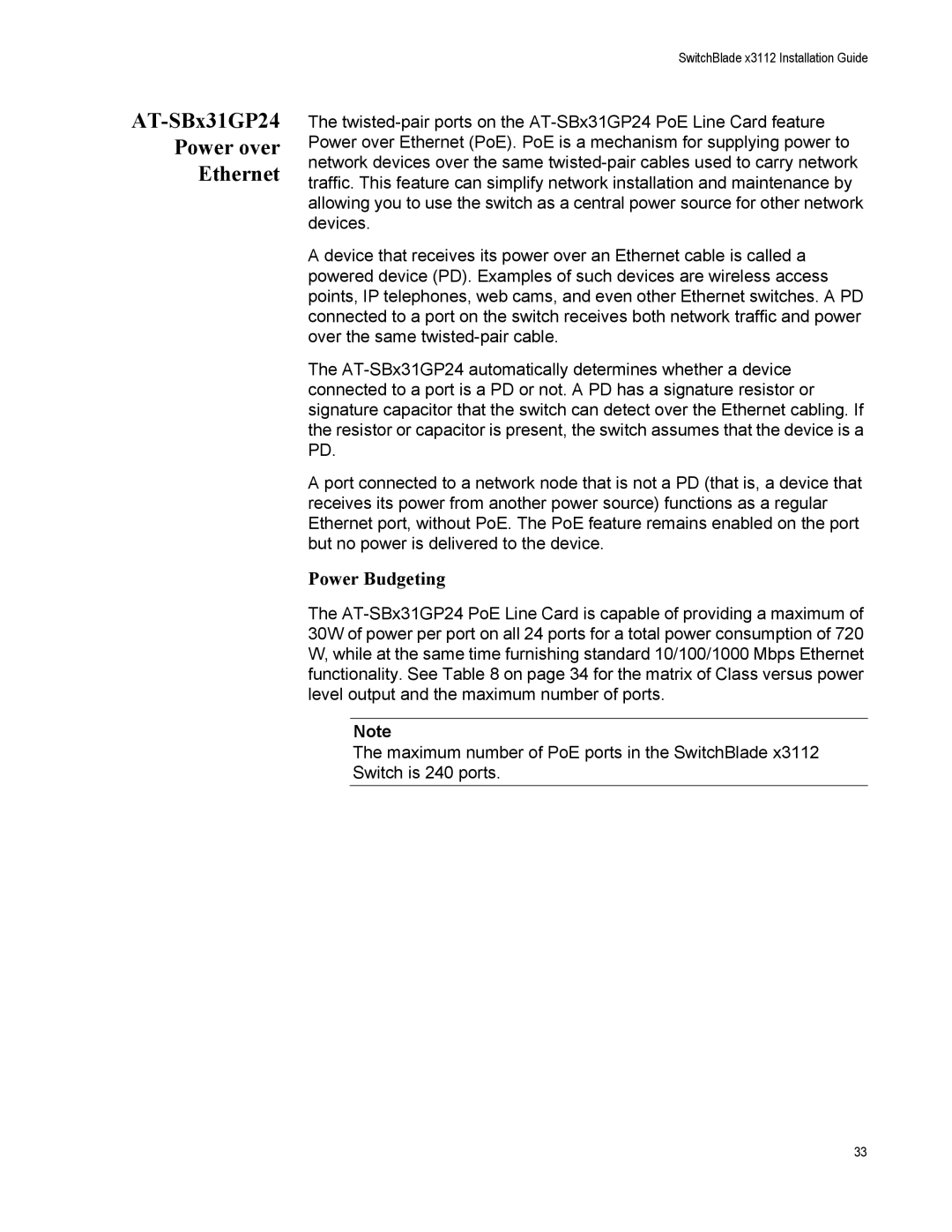SwitchBlade x3112 Installation Guide
The twisted-pair ports on the AT-SBx31GP24 PoE Line Card feature Power over Ethernet (PoE). PoE is a mechanism for supplying power to network devices over the same twisted-pair cables used to carry network traffic. This feature can simplify network installation and maintenance by allowing you to use the switch as a central power source for other network devices.
A device that receives its power over an Ethernet cable is called a powered device (PD). Examples of such devices are wireless access points, IP telephones, web cams, and even other Ethernet switches. A PD connected to a port on the switch receives both network traffic and power over the same twisted-pair cable.
The AT-SBx31GP24 automatically determines whether a device connected to a port is a PD or not. A PD has a signature resistor or signature capacitor that the switch can detect over the Ethernet cabling. If the resistor or capacitor is present, the switch assumes that the device is a PD.
A port connected to a network node that is not a PD (that is, a device that receives its power from another power source) functions as a regular Ethernet port, without PoE. The PoE feature remains enabled on the port but no power is delivered to the device.
Power Budgeting
The AT-SBx31GP24 PoE Line Card is capable of providing a maximum of 30W of power per port on all 24 ports for a total power consumption of 720 W, while at the same time furnishing standard 10/100/1000 Mbps Ethernet functionality. See Table 8 on page 34 for the matrix of Class versus power level output and the maximum number of ports.
Note
The maximum number of PoE ports in the SwitchBlade x3112 Switch is 240 ports.

